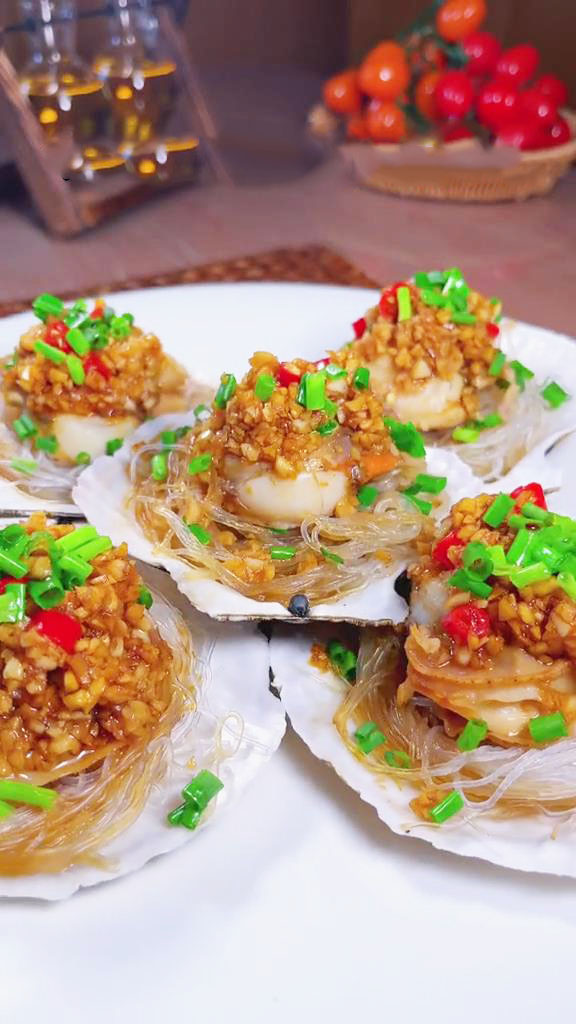This post may contain affiliate links. Please read our disclosure policy.
Tiger skin peppers–a simple recipe made with pantry-friendly seasonings. Have a taste of authentic Sichuan cuisine with this effortless tiger skin pepper recipe. Prepare your green peppers and season them with salt, garlic cloves, fermented black beans, oyster soy, and light soy sauce.
What Are Tiger Skin Peppers?
Tiger skin pepper dish is popularly known as hu pi jian jiao in Chinese. It is a Sichuan dish called tiger skin because of its charred skin with a tiger-like pattern. This pattern is achieved after searing the peppers with salt in a dry wok without oil.
Although I don’t quite see the resemblance to tiger skin, it doesn’t change the fact that it’s a simple and delicious dish.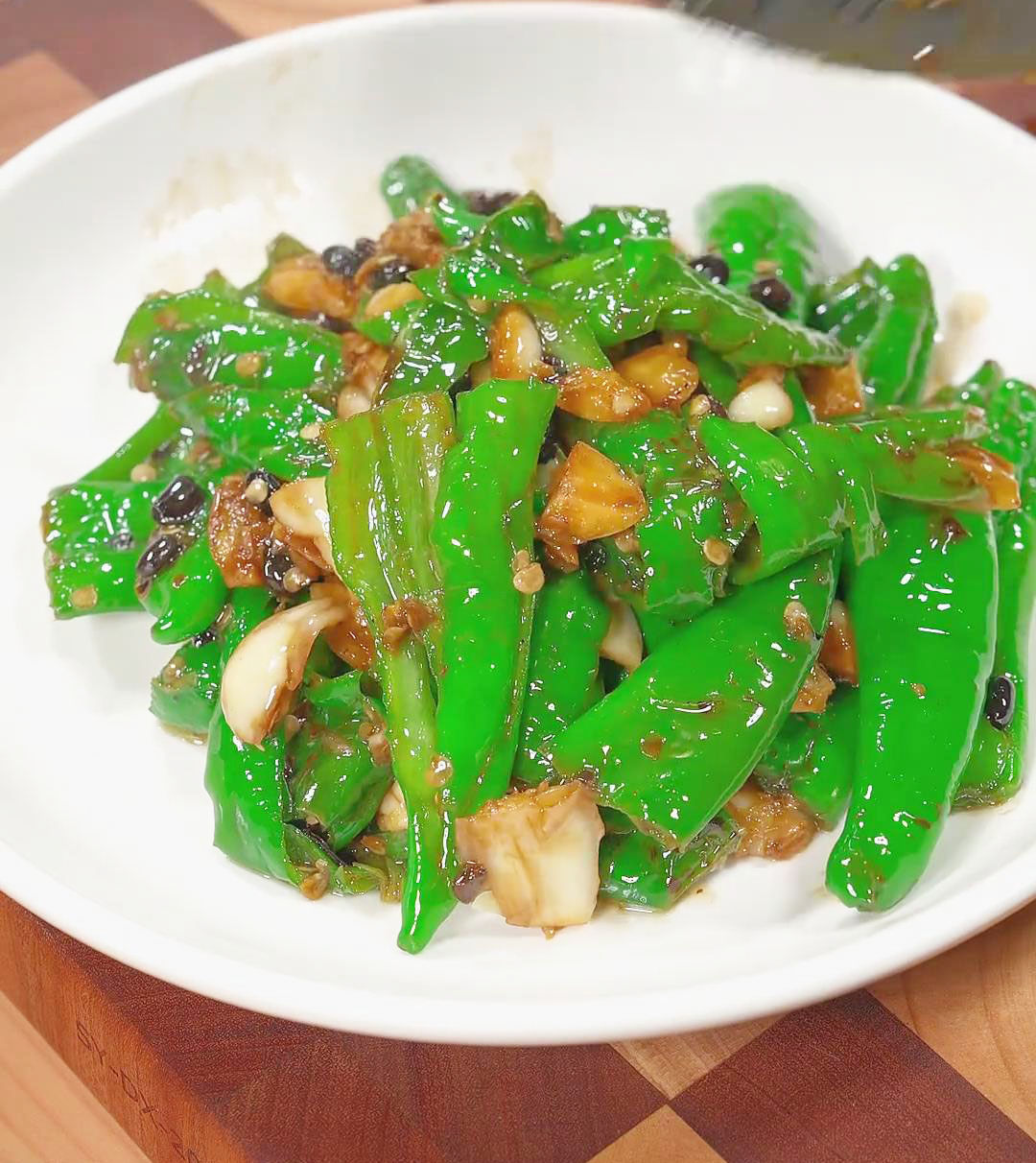
You will love its spiciness, crisp skin, and juicy center. When stir-fried with seasonings, it gets a garlicky taste with the garlic cloves and its umami, salty taste with the added oyster sauce and light soy sauce. The special ingredient that I used is fermented black beans, which lend a rich, umami, and funky flavor.
For an extra boost of flavor, you can stir-fry the peppers with lard and bouillon powder. You can finish the recipe in 5 easy steps. Pair this dish with these meatless recipes:
- Spiral Cucumber Salad
- Malabar Spinach With Oyster Sauce
- Blanched Bok Choy With Vegetable Sauce
- Lotus Root Salad With Hot & Tangy Dressing
- Celtuce Salad
- Tofu Skin Rolls With A Versatile Filling
- Cooked Lettuce With A Garlicky Dressing
- Celtuce Stir-Fry
- Stir Fry Chayote
- Ong Choy With Garlic Sauce
- Stir-Fry Bean Sprouts
- Stir-Fried Yu Choy
- Boiled Okra With Spicy Savory Sauce
Ingredient Tips And Alternatives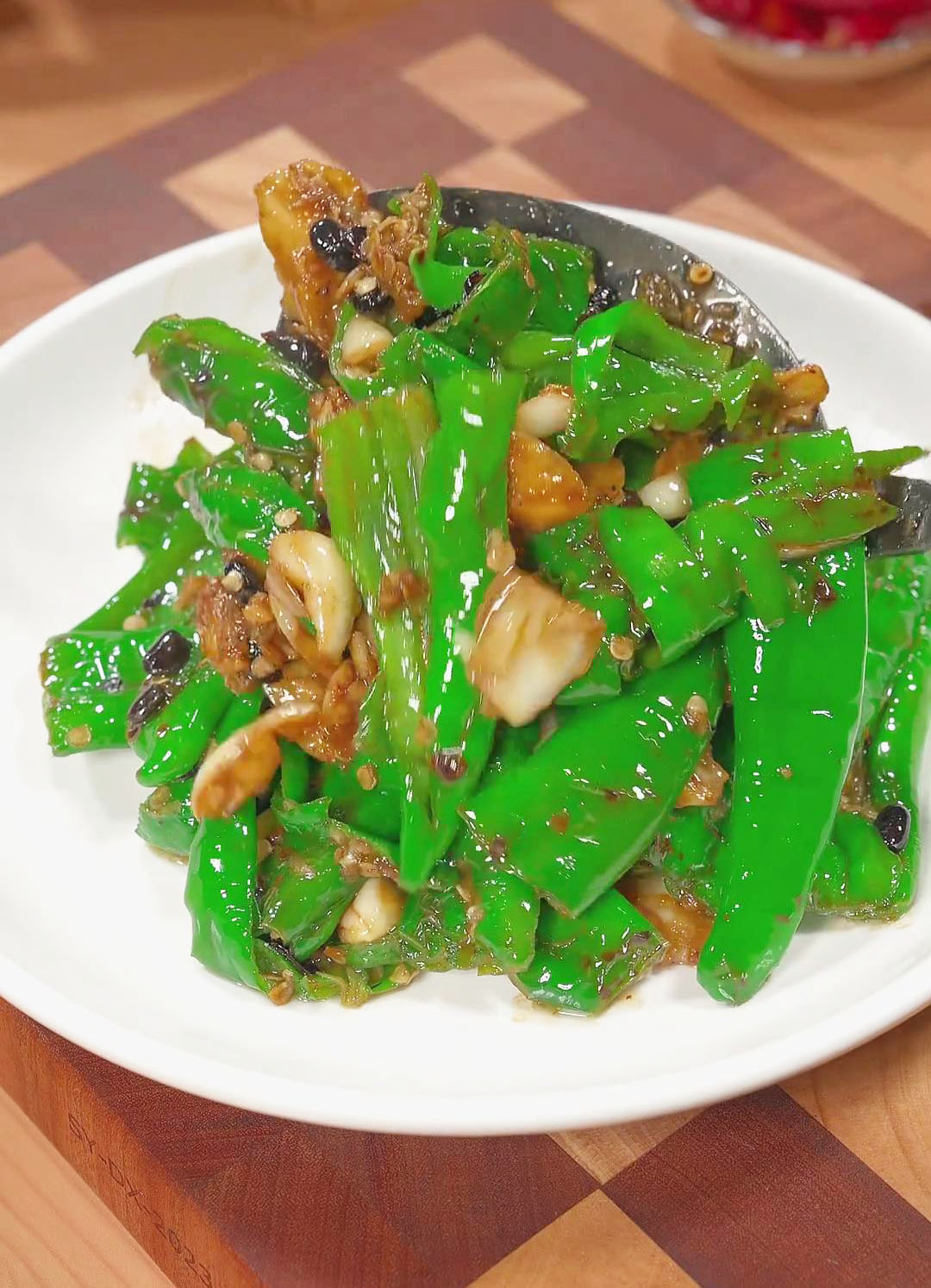
Need tips on how to choose an ingredient? Don’t skip this informative section! Below are my recommended ways to prepare an ingredient and how to substitute each.
- Green peppers: Use fresh medium to large green peppers and remove the stems. You can use red peppers as an alternative but it won’t be the classic look of tiger skin peppers. If the peppers are very long, cut them into 2-3 sections before smashing them.
- I smashed each pepper with a meat cleaver to open them up. However, if you want to slice them open that’s also fine. I LOVE super spicy foods, so I did not bother removing the seeds and its core. If you like to reduce the spiciness, remove the core and scoop out the seeds.
- You may wonder why I smashed the peppers instead of slicing them. As much as possible, I don’t want to touch the peppers with my hands since it will feel hot afterward. That is why if you plan to touch the peppers and remove the seeds and core, it is better to wear food-safe gloves. Moreover, be careful not to touch your face or eyes as this can pass on the hot feeling. After handling the peppers, make sure to wash your hands thoroughly with soap. Even after washing your hands, there may be some capsaicin left (the chemical compound that is responsible for heat). So, it is best to avoid touching your eyes or face still. Additionally, I believe smashing the peppers increases their surface area, allowing them to absorb more juices and become more flavorful.
- Salt: Salt serves as a flavor enhancer. It brings out the flavor of the chili peppers as they are cooked in a dry wok. Use any type of salt, such as sea salt, pink salt, and kosher salt.
- Lard: For the stir-frying step, I used lard as my oil. If you’re unfamiliar, lard is pork fat commonly used in Chinese pastries (such as Suzhou Mooncake) and savory dishes. You can check out my recipe on how to make lard. It’s actually neutral in taste but adds a rich flavor. If you don’t like animal fat, you can easily swap it with vegetable shortening, dairy-free butter, coconut oil, or vegetable oil.
- Garlic: Stir-fry some roughly chopped garlic or whole garlic for a garlicky, nutty, and pungent taste. If you don’t have garlic but want the garlicky flavors, you can substitute 1 clove of garlic with 1/8 tsp of garlic powder or 1/4 tsp of granulated garlic. You can also use pre-cooked crispy fried garlic and add it last since it is already cooked.
- Fermented black beans: This is my special ingredient, fermented black beans which you may also know as douchi, tochi, or salted black beans. Once the black soybeans are fermented, they have a unique salty, pungent, umami, and slightly bitter taste. You can buy fermented black beans in Asian grocery stores or online markets like Amazon.
- Oyster sauce: Despite its name, oyster sauce does not taste fishy but it is umami, salty, and briny. It can have a hint of caramel with its slight sweetness. You can swap this with hoisin sauce, kecap manis, teriyaki sauce, Worcestershire sauce with soy sauce and sugar, and oyster-flavored sauce.
- Light soy sauce: Make it more umami with light soy sauce. It also adds saltiness with a subtle soybean taste. You can also use tamari, liquid aminos, coconut aminos, or gluten-free soy sauce.
- Bouillon powder: Bouillon powder is just a flavor enhancer, so this is optional if you want to refrain from using powdered flavoring. You can use chicken, vegetable, or chicken-flavored chickenless bouillon powder.
- Optional seasonings: To neutralize the saltiness and spiciness, you can sprinkle a bit of sugar and adjust to taste. I recommend using white granulated sugar. Some recipes also use Chinese black vinegar, the perfect pairing with the salty, umami light soy sauce. With Chinese black vinegar, it adds a fruity, tangy, and slightly sweet taste. You can get this in Asian grocery stores or online markets like Amazon. It may also be labeled as Chinkiang vinegar or Zhenjiang vinegar.
Prepare These Ingredients And Kitchenware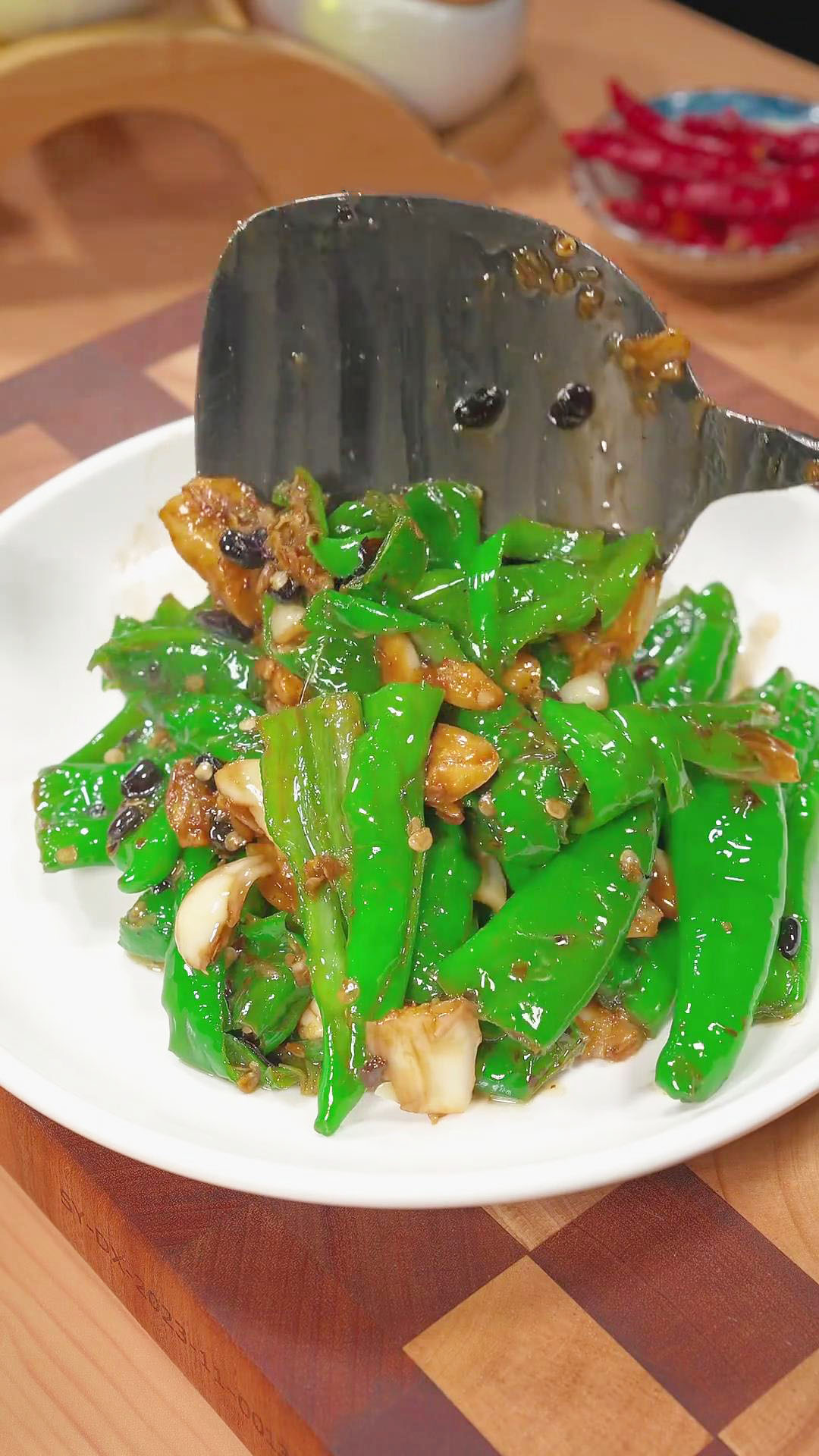
My recommended kitchen items are a meat cleaver for crushing the peppers and a wok for stir-frying. A meat cleaver is better for smashing peppers because of its wide, heavy blade. For authentic Sichuan cooking, it is best to use a wok rather than a regular pan.
Why is a wok better? Its wide, slanted sidewalls are ideal for stir-frying since you can stir and toss the ingredients without spilling. Its shape and material are ideal for cooking at high heat, trapping heat, and distributing heat evenly.
Kitchenware:
- Meat cleaver or knife
- Wok or non-stick pan
- Spatula
Ingredients:
- 300g green peppers
- 1 tsp salt
- 1 tbsp lard
- 2garlic heads (peeled and crushed)
- 1 tbsp fermented black beans
- 1-2 tbsp light soy sauce
- 1 tbsp oyster sauce
- ¼ tsp bouillon powder
5 Detailed Steps To Make Tiger Skin Peppers (虎皮青椒)
Prepare the green peppers, let them char in the dry wok, and season them just the way you like it—and voila! You have an authentic Sichuan dish done in less than 15 minutes. Watch my 30-second tutorial video on Instagram or TikTok to learn more.
For a complete Sichuan taste, pair this dish with my other Sichuan recipes, such as Sichuan Wontons In Chili Oil (Spicy Chao Shou), Classic Mapo Tofu, and Yu Xiang Eggplant (Chinese Eggplant with Garlic Sauce). Finished making tiger skin peppers? Let us know your thoughts on the recipe by leaving a comment in the comments section!
- Clean and chop off the stems of the green peppers. If the peppers are very long, cut them into 2-3 sections before smashing them. Smash them with a meat cleaver to open them up. You can remove the seeds and core if you want to tone down the spiciness. If you find smashing difficult, simply slice the peppers in half.

- Then, heat up a dry wok until hot but not smoking. Reduce to medium-low heat, toss in the peppers, and add a pinch of salt. Stir and press down the peppers with a spatula to let them sizzle on one side and get that nice blistered tiger-like look. When one side is covered in blisters, turn it over to let the other side sear. Repeat these steps until the green peppers are covered in brown blisters. If the wok produces a lot of smoke, to prevent your neighbors from calling 911, I recommend adding about one teaspoon of cooking oil and continuing stir-frying until the green pepper skins achieve the desired tiger-skin look. Once the green peppers are evenly covered with charred spots, transfer to a plate and set aside. The charing should only be spots, and not completely burned.
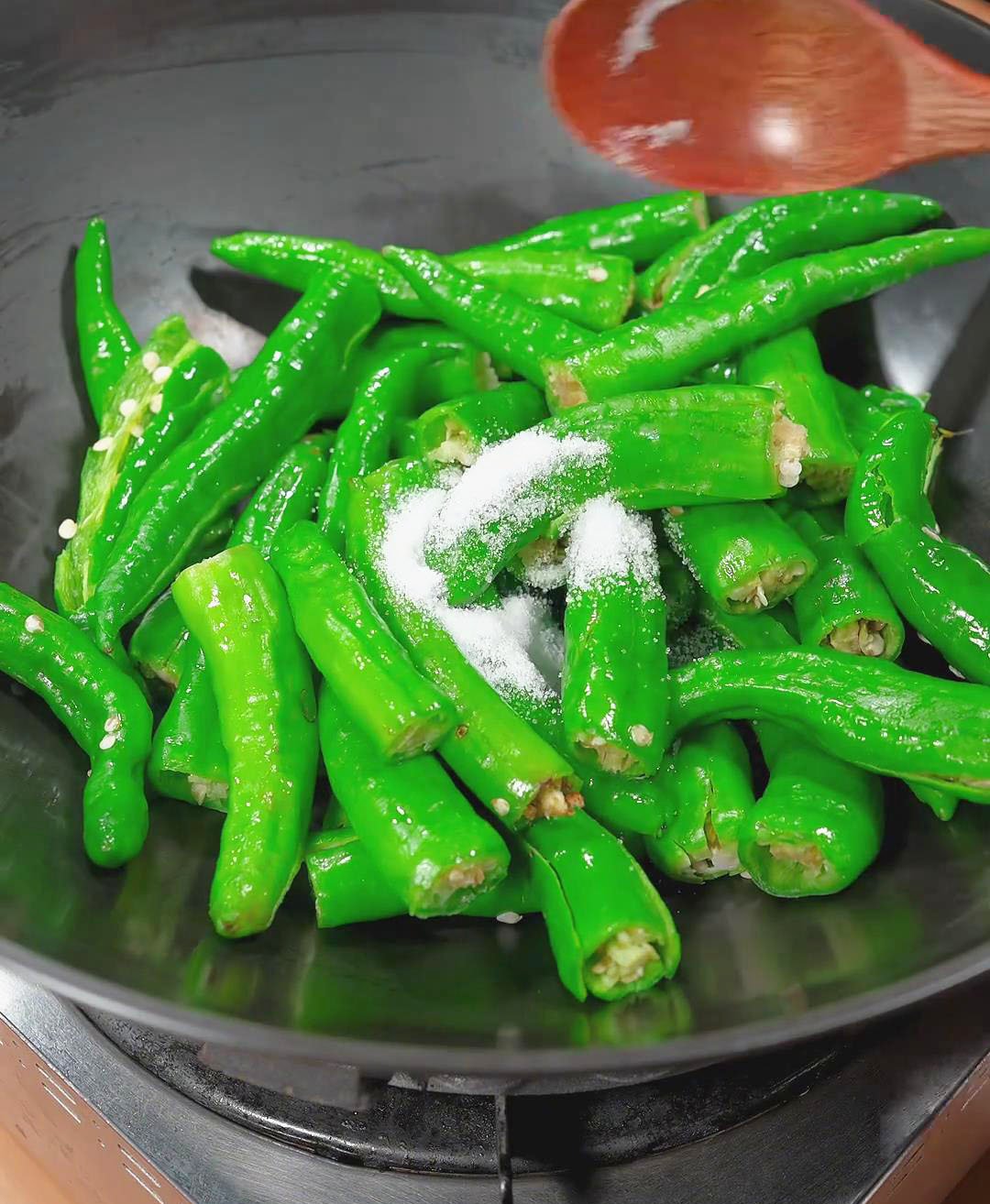
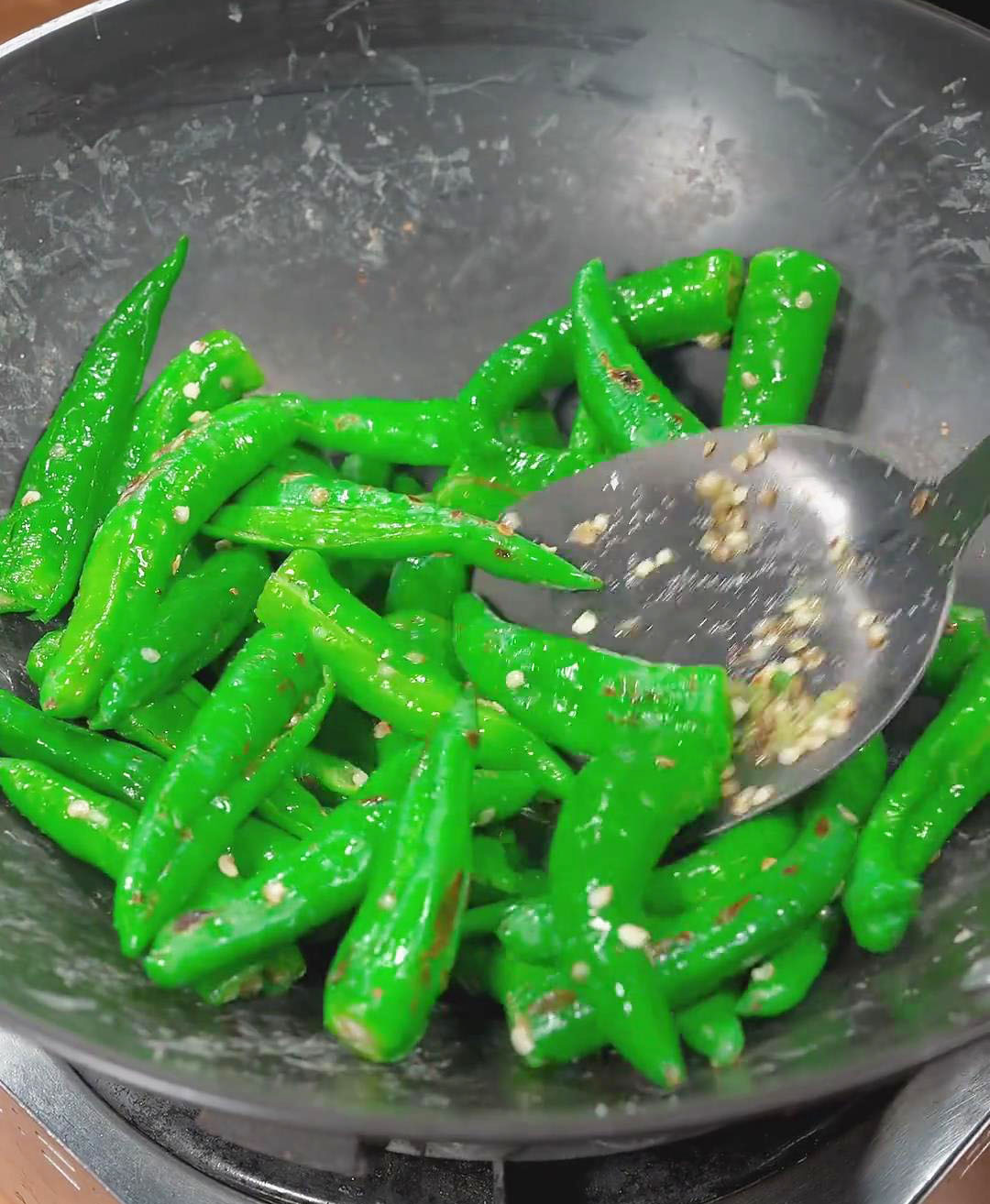
- Next, add a dollop of lard to the cleaned wok and let it melt. When the lard is fully melted and distributed in the wok, toss in some peeled and crushed garlic cloves and fermented black beans. Lightly cook them and let them infuse the oil with its fragrance. You do not need to fully cook the garlic or make them crispy brown.
- TIP: I know peeling 2 garlic heads is not a fun task. So, let me share with you how I peeled everything in seconds! Take the garlic head and push it down with your hand to separate the cloves and remove the outer skin. Then, place everything in a large glass jar with a lid. Basically, you need a large container with plenty of space for the garlic cloves to move around and bump. Lastly, SHAKE! And shake and shake until all the skins are peeled off. This may take 30 seconds or more of vigorous shaking.
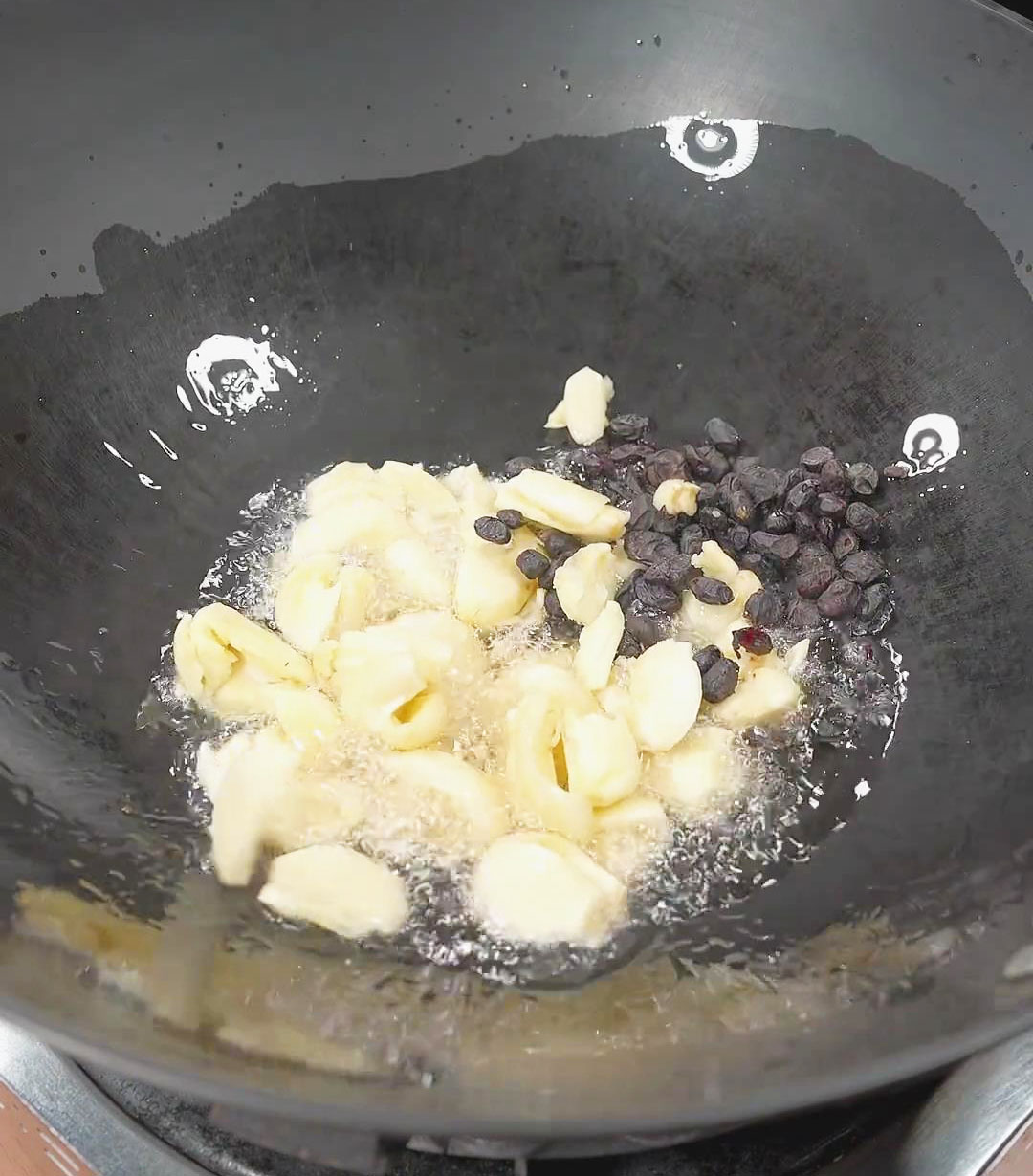
- TIP: I know peeling 2 garlic heads is not a fun task. So, let me share with you how I peeled everything in seconds! Take the garlic head and push it down with your hand to separate the cloves and remove the outer skin. Then, place everything in a large glass jar with a lid. Basically, you need a large container with plenty of space for the garlic cloves to move around and bump. Lastly, SHAKE! And shake and shake until all the skins are peeled off. This may take 30 seconds or more of vigorous shaking.
- Afterward, combine the charred green peppers and season with oyster sauce, light soy sauce, and chicken bouillon powder. Adjust to taste.
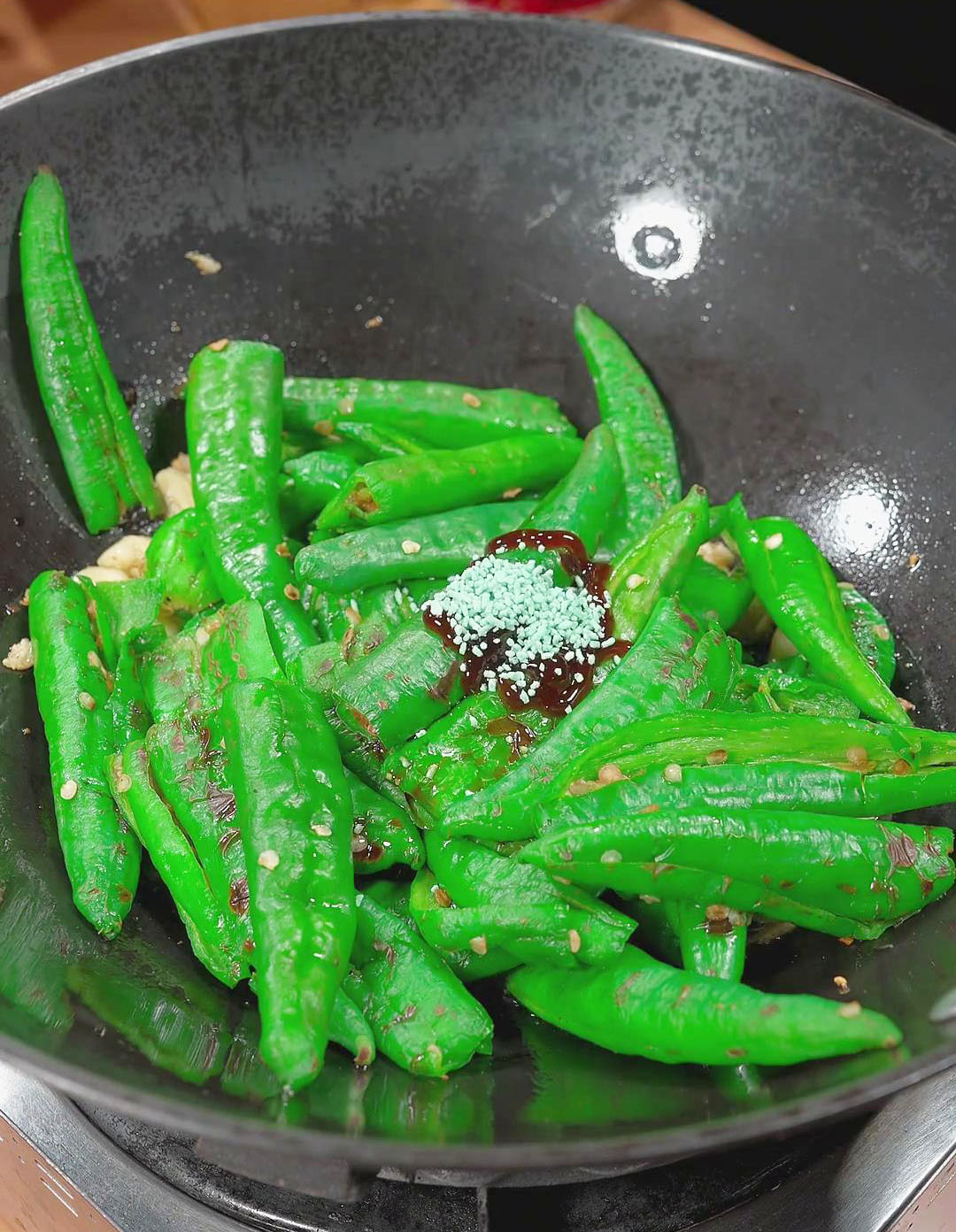
- ir-fry continuously until the flavors meld and it is ready to serve! Pair it with steamed white rice.
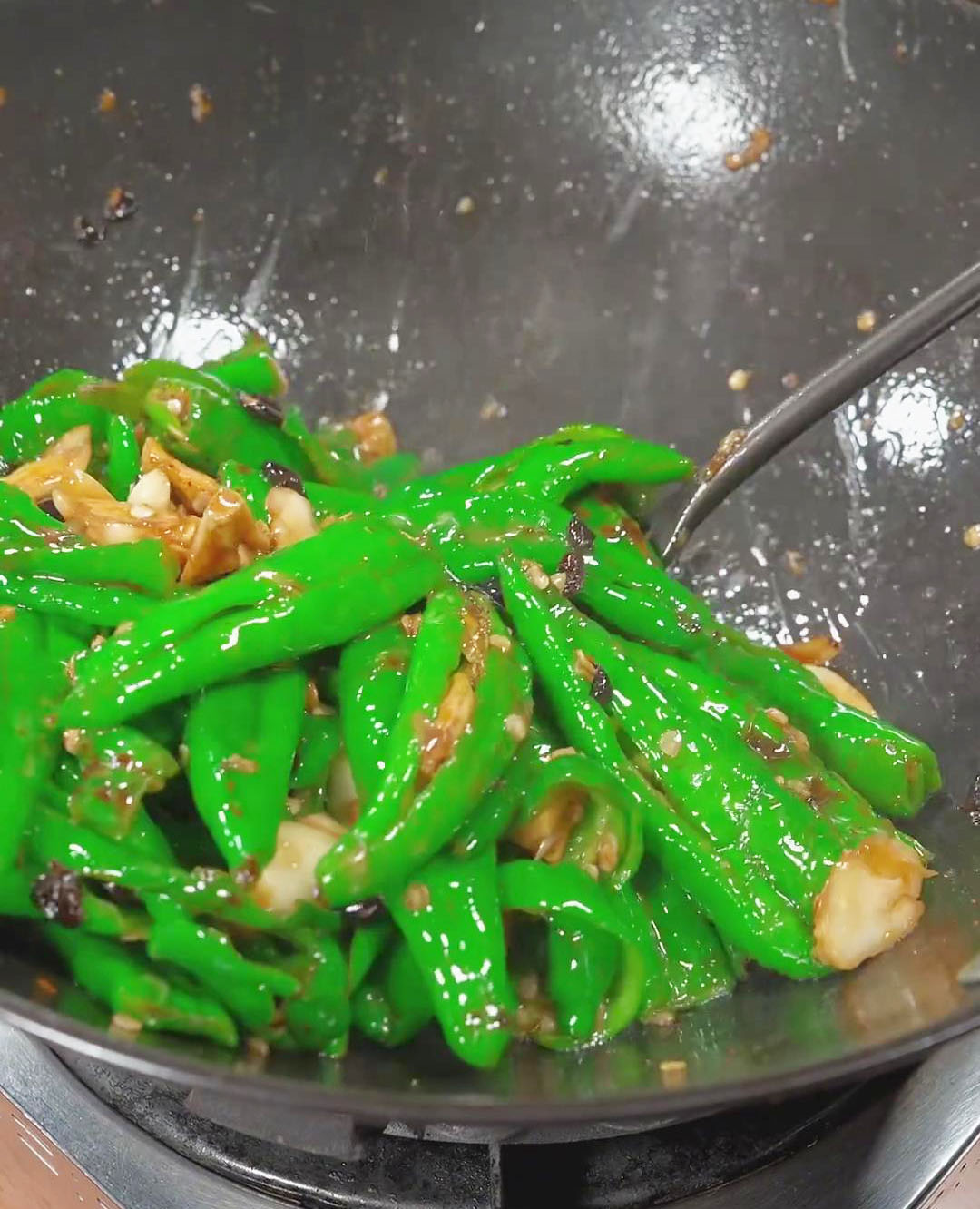
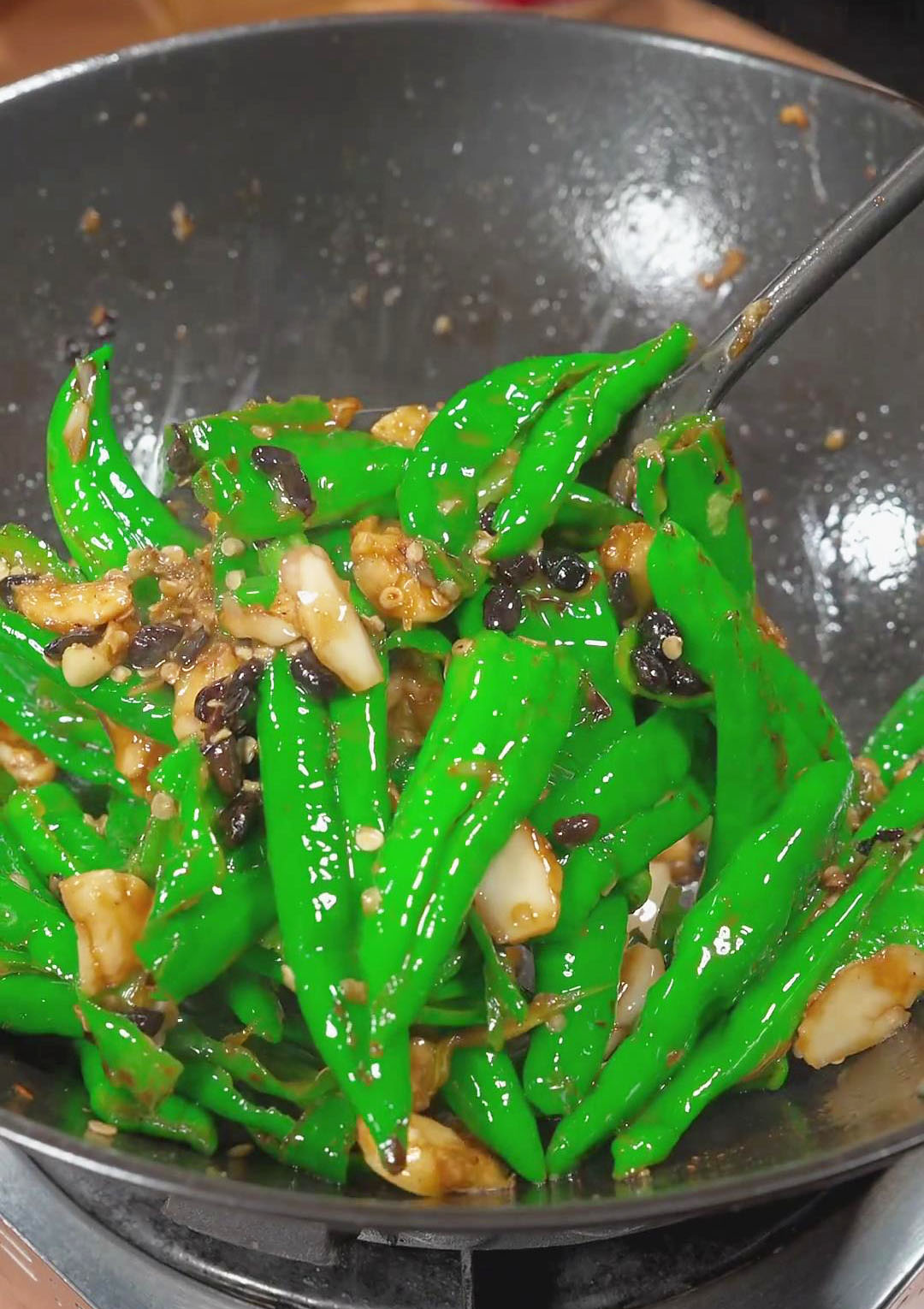
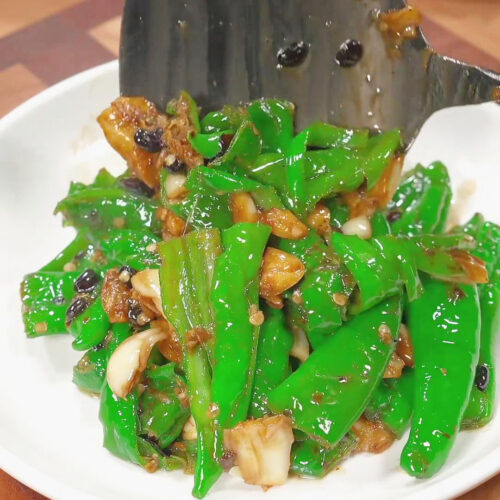
Tiger Skin Peppers Recipe
Equipment
- Meat cleaver or knife
- Wok (or non-stick pan)
Ingredients
- 300 g green peppers
- 1 tsp salt
- 1 tbsp lard
- 2 garlic heads peeled and crushed
- 1 tbsp fermented black beans
- 1-2 tbsp light soy sauce
- 1 tbsp oyster sauce
- ¼ tsp bouillon powder
Instructions
- Clean and chop off the stems of the green peppers. If the peppers are very long, cut them into 2-3 sections before smashing them. Smash them with a meat cleaver to open them up. You can remove the seeds and core if you want to tone down the spiciness. If you find smashing difficult, simply slice the peppers in half.Smash peppers with a meat cleaver
- Then, heat up a dry wok until hot but not smoking. Reduce to medium-low heat, toss in the peppers, and add a pinch of salt. Stir and press down the peppers with a spatula to let them sizzle on one side and get that nice blistered tiger-like look. When one side is covered in blisters, turn it over to let the other side sear. Repeat these steps until the green peppers are covered in brown blisters. If the wok produces a lot of smoke, to prevent your neighbors from calling 911, I recommend adding about one teaspoon of cooking oil and continuing stir-frying until the green pepper skins achieve the desired tiger-skin look. Once the green peppers are evenly covered with charred spots, transfer to a plate and set aside. The charing should only be spots, and not completely burned.toss in the peppers, and add a pinch of saltlet them sizzle on one side and get that nice blistered tiger like look
- Next, add a dollop of lard to the cleaned wok and let it melt. When the lard is fully melted and distributed in the wok, toss in some peeled and crushed garlic cloves and fermented black beans. Lightly cook them and let them infuse the oil with its fragrance. You do not need to fully cook the garlic or make them crispy brown.
- Afterward, combine the charred green peppers and season with oyster sauce, light soy sauce, and chicken bouillon powder. Adjust to taste.combine the charred green peppers and seasonings
- Stir-fry continuously until the flavors meld and it is ready to serve! Pair it with steamed white rice.

